Last Chance to Catch NYC's Holiday Notalgia Train
We met the voices of the NYC subway on our nostalgia ride this weekend!


New York City is full of marvels, including waterfalls, though as every other ‘natural’ occurrence in the city save for parks, they are man-made, even the ones in Central Park and Prospect Park. Often, however, urban waterfalls of all shapes and sizes throughout the city provide a brief respite from the urban chaos. New York has a handful, some built to look natural in parks, others installed into the walls and lobbies of buildings. In any case, each is a special find among the concrete and iron. We’ve rounded up 10 of our favorite urban waterfalls in New York City:
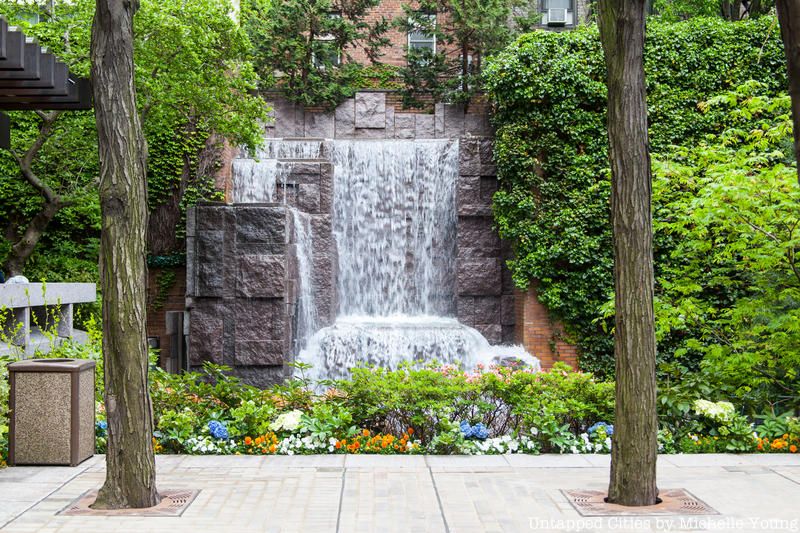
Tucked away in a secluded lot on 51st Street between 2nd and 3rd Avenues is Greenacre Park, the central feature of which is its tiered urbanwaterfall. The park is frequented by New Yorkers looking to read or sit in the quiet, and thus, prohibits photography from inside, though there is nothing stopping you from taking a few from the sidewalk. Its location between two towering buildings have led the city to dub it a ‘vest-pocket’ park. It was built in 1971 by the Greenacre Foundation, which was founded two years earlier by Mrs. Jean Mauze, formerly Abby Rockefeller.
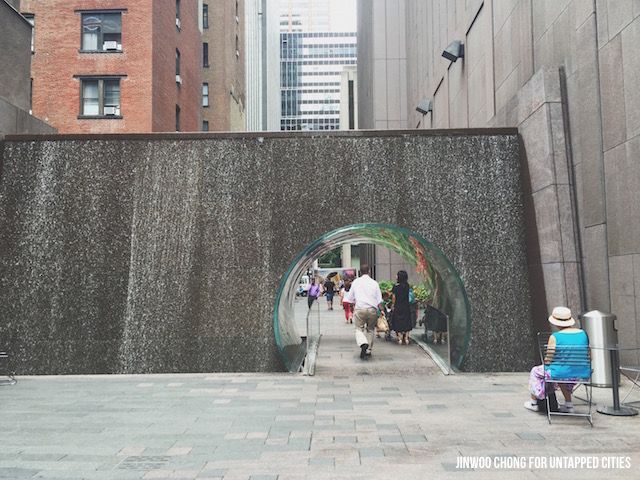
This solid glass tunnel built into the waterfall at the McGraw-Hill park on 48th Street and 6th Avenue is quite the tourist attraction. Many like to take a photo inside the tunnel, which provides an unusual look at the water falling all around it. Though the park does not have much room for seating, its location just off Times Square makes it a welcome resting place from the traffic. The park’s interesting sculpture waterfall was added to the park sometime after the space was built in 1970.
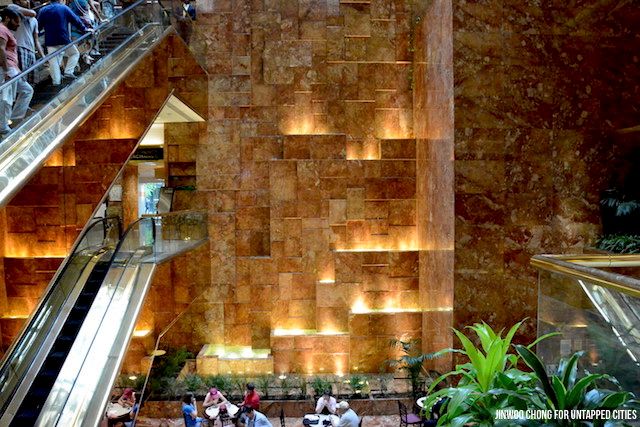
America’s former president has a thing for the gilded and the gaudy. The marble and granite water wall in the lobby of Trump Tower flows down nearly five stories to the bar and eating area down below. Though large, the water is quite silent.
This 13-foot manmade waterfall at the Rock Garden of the New York Botanical Garden in the Bronx looks just about as natural as they come. The waterfall has been a popular tourist attraction of the garden since the area was built in the 1930s (the Botanical Garden itself was built 40 years earlier). The 250-acre site attracts around 1 million visitors every year.
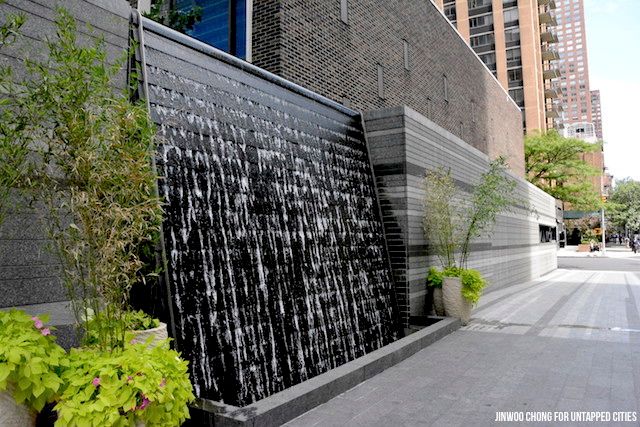
This water wall occupying the parking lot of a residential tower on Amsterdam Avenue sees few visitors, but it’s one of our favorites in that it is entirely silent, creating an eerie effect combined with the flowing water. Given the Lamborghini we saw parked next to it and what we know about this building, this high-rise has an equally sky-high rent.
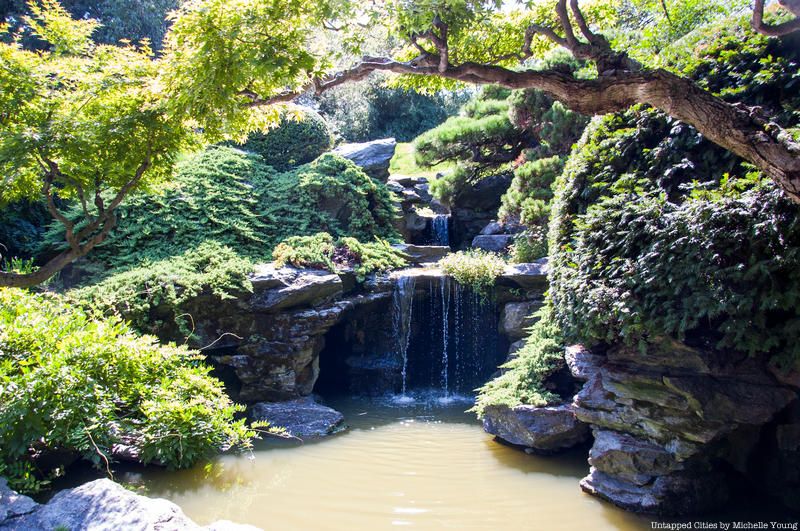
This addition to the Brooklyn Botanic Garden‘s Japanese Hill-and-Pond Garden was designed by its landscaper to evoke the feel and sights of Japan. The two-tiered waterfall is and surrounding shrubbery, meticulously replicated from indigenous species normally found in Japan, seem to transport us right out of New York and far into the east. It is also one of the garden’s prime locations to observe the annual cherry blossom season.
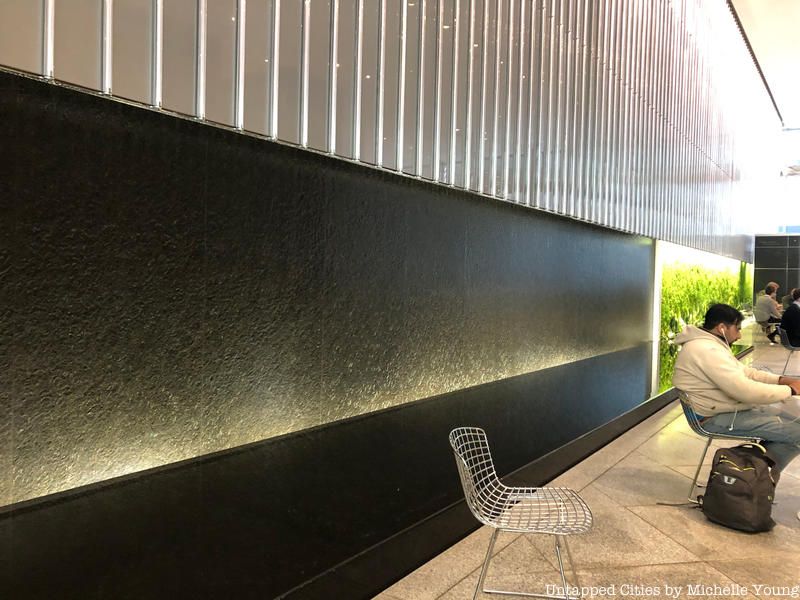
The water wall at the Park Avenue Plaza is closed for renovation. We did however spot plans for the new and improved public space that included the waterfall intact. The new design by Janson Goldstein LLP will include a new and improved water wall, pictured above. It is the area’s first major renovation since it was built in 1797.
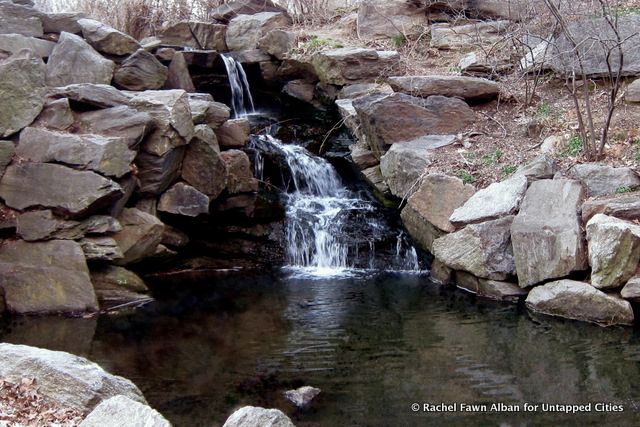
There are actually five waterfalls in Central Park, all manmade and designed to fit in with the prehistoric rock formations all around them. The water that flows here is actually New York City drinking water that comes from a 48-inch pipe hidden by the rocks at the Pool Grotto on West 100th Street. The waterfalls are primarily connected through a stream called the Loch.
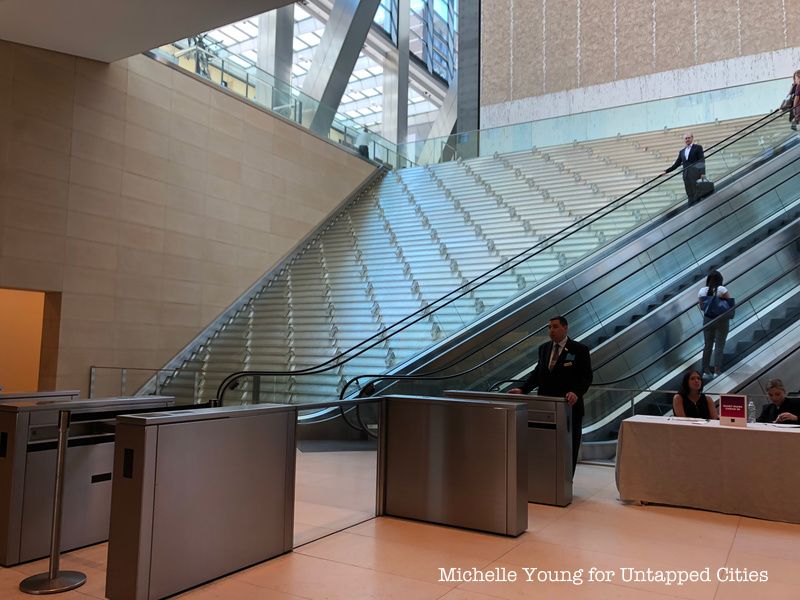
The Icefall, occupying the lobby of the Hearst Tower on 57th Street, is a recent construction. Designed by James Carpenter Design Associates Inc., the fountain takes advantage of the building’s unique, naturally-lit design. The original Hearst Building was converted into the lobby of the current Hearst Tower, whose glass facade was incorporated nearly eighty years after the Great Depression halted William Randolph Hearst’s initial work on the skyscraper. Water flows over 50 tons of glass plating and also acts as the lobby’s air conditioning, absorbing heat from its surroundings and moving the air with its water. See photos of Icefall’s construction at Inhabitat.
At last, we have Paley Park, another of New York’s privately owned public spaces (POPS), hidden in a small alcove on 53rd Street between Madison and 5th Avenues. The area, much like Greenacre Park, is frequented by readers looking to relax on its chairs and enjoy its nearly 20-foot waterfall. Its ivy covered walls have been shutting out the sounds of the city since it opened in the 1960s. The area was once the site of the Stork Club, which from 1929 to 1965 was one of the most prestigious social clubs in the city, and just a few steps down is a piece of the Berlin Wall.
Next, see a photography exploration of Manhattan’s privately owned public spaces and the Top 10 Indoor Public Spaces in Manhattan for Your Very Own Urban Oasis. Get in touch with the author @jinwoochong.
Subscribe to our newsletter